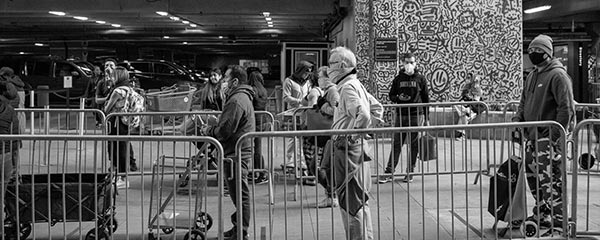Story Highlights
- The U.S. uninsured rate continues to fall
- The obesity rate inches up again
- Young black males suffer a well-being deficit
WASHINGTON, D.C. -- Gallup published nearly 60 articles in 2015 about Americans' health and well-being. Through its year-round daily surveys, the Gallup-Healthways Well-Being Index provides the most up-to-date data and insights available on Americans' purpose, social, financial, community and physical well-being. The following list includes Gallup editors' picks for the top 10 most important findings from 2015.
- The uninsured rate among U.S. adults continues to fall. Gallup and Healthways have the most up-to-date data available on the U.S. uninsured rate. In the third quarter, 11.6% of U.S. adults were without health insurance, down significantly from 13.4% in the same quarter a year ago and 18.0% two years ago, just before the Affordable Care Act took effect. The uninsured rate continues to drop in 2015 in most states.
- Actively disengaged employees are more likely to have health issues. Disengaged workers are more likely than their engaged peers to report experiencing physical pain, high blood pressure and depression. They also report having more days per month when health issues limited their activities: 2.17 unhealthy days for actively disengaged employees versus 1.25 for engaged employees. Gallup found that an actively disengaged worker aged 40 to 49 costs his or her employer 85% more in lost productivity because of unhealthy days than an engaged employee in the same age range.
- Nearly two in 10 Americans say they take drugs to relax almost every day. West Virginians are most likely to report using drugs or medications (including prescription drugs) that alter their mood or help them relax. Southern states make up six of the top 10 highest drug use states. Those who use drugs that affect their mood almost every day have lower well-being than those who don't.
- Young adults' cigarette use declined significantly over the past decade. The smoking rate for 18- to 29-year-olds, which used to be the highest among all age groups, is now equal to that of their older counterparts. But this steep decline from 34% from 2001-2005 to 22% from 2011-2015 may be linked to young adults taking up other forms of tobacco use, such as cigars, pipes and smokeless tobacco.
- Heart attack survivors may not be making necessary lifestyle changes. Those who have had a heart attack are significantly more likely to smoke, to be obese and to experience stress than those who have never had a heart attack. And those who have survived a heart attack are much less likely to exercise regularly.
- Young black males in the U.S. suffer a well-being deficit. Young black males as a group have higher unemployment, lower graduation rates, less access to healthcare and higher incarceration rates than other groups in the U.S. And in 2014, the deaths of several young black men during incidents with police became headline news. Gallup and Healthways found that on average, black men aged 18 to 34 have lower well-being than white, Asian and Hispanic men in the same age range. Young black males also have more negative outlooks on their lives than do young males who aren't black.
- The U.S. obesity rate continues to inch up. The obesity rate among U.S. adults in 2014 hit 27.7%, up more than two percentage points from 2008 and the highest rate recorded in seven years of tracking. More Americans who were previously overweight moved into the obese category. Americans aged 65 and older have experienced the sharpest rise in obesity since 2008.
- Getting more sleep is associated with higher well-being. Getting more hours of sleep is linked to having higher overall well-being, with the relationship peaking at eight hours and leveling off thereafter. Those who usually sleep seven hours per night have a 4.8-point advantage in their Well-Being Index score over those who typically sleep for six hours. But more than four in 10 adults report getting less than seven hours of sleep per night.
- Well-being and employee engagement have additive benefits. Employees who are engaged at work and have high well-being consistently outperform their peers who are engaged but have low well-being across a variety of business and health outcomes.
- Heart attacks and depression are closely linked. Americans who have had a heart attack are twice as likely as those who have not to say they are currently being treated for depression, 16.5% vs. 8.1%, respectively, after controlling for key demographics.
To stay up-to-date on the latest health and well-being findings in 2016, sign up for Gallup News alerts.
Learn more about how the Gallup-Healthways Well-Being Index works.
